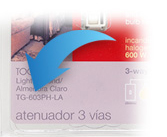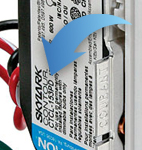
Explore Knowledge Articles
Lighting Designer Mode in the Lutron App
What is Lighting Designer Mode?
Lighting Designer Mode is a powerful feature in the Lutron App for HomeWorks QSX and Athena. It empowers design professionals to fine-tune programming while they aim and focus fixtures, and enables temporary control over scene settings within the Lutron App to:
- Fine-tune intensity and color settings (where applicable)
- Preview changes in real time on the actual loads
- Save changes to active scenes (Note: area scenes only)
Limitations
The following is a list of Lighting Designer Mode's limitations:
- Only Area Scenes can be adjusted and saved in Lighting Designer Mode (Not scenes on keypads or shared scenes)
- Standard and shared scenes can be edited using the existing keypad button editing workflow, not Lighting Designer Mode
- Editing does NOT automatically sync back to Lutron Designer
How to Use Lighting Designer Mode
Step 1: Open the Lutron App and connect to the HomeWorks system.
Step 2: Tap the Settings (gear) icon and select Enter Lighting Designer Mode
Step 3: Navigate to the desired Area and select Zone Edits
Step 4: Once in Zone Edits, select the zone of light to adjust. Depending on the zone's load type, you will have several settings that can be adjusted. For Ketra loads, you can adjust load level, correlated color temperature or saturated color, vibrancy and the fade time. As the settings are adjusted, the zone will automatically adjust in real time.
Step 5: Once the scene has been set, select Save to and select the Scene to save the load levels.
How to Sync Changes Back to Lutron Designer
Lighting Designer Mode writes directly to the processor, not to your project file, so any changes made in the Lutron app will not automatically appear in the Lutron Designer database. To apply these changes, you'll have two options to choose from.
Option 1: (Recommended) Download from the processor into Designer.
To do this, follow these steps:
Step 1: Open your project in Lutron Designer.
Step 2: Navigate to Tools > Sync App Edits.
Step 3: If needed, select Preview Edits to review changes made in the Lutron App.
Step 4: After selecting Yes to sync app edits, changes will be visible in Program > Area Scenes and can be applied to system triggers on the project (i.e., keypads, timeclocks, and sequences).
Step 5: Once you've made your edits in Lutron Designer, preform a Transfer to sync the changes to the processor.
Option 2: Manually Reapply Changes in Designer
If you prefer not to overwrite your existing file or the changes were minor:
Step 1: Open your project in Lutron Designer.
Step 2: Manually re-enter changes based on notes or screenshots taken in the Lutron App.
Step 3: Once done making edits in Lutron Designer, perform a Transfer to sync the changes to the processor.
Best Practices when using Lighting Designer Mode
- Use for final walkthroughs: Ideal for adjusting scenes, potentially with clients present, without requiring database transfers.
- Log changes: Document all saved changes to apply them to your Lutron Designer file later, if needed.
- Coordinate with programming teams to prevent overwriting important logic or losing changes.
Troubleshooting
- Cannot enter Designer Mode: Ensure you're connected to a HomeWorks QSX system and using the latest app.
- Scene won't save changes: Confirm you're editing an Area Scene, not a keypad scene or individual zone.
- Scene changes not reflected in Lutron Designer software: Sync App Edits to retrieve latest scene values.
For further support, contract Lutron Technical Support (888-588-7661), or refer to the HomeWorks QSX documentation portal.


